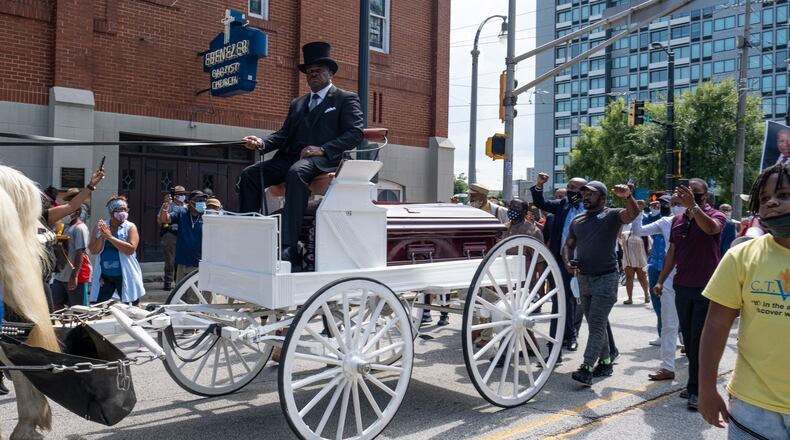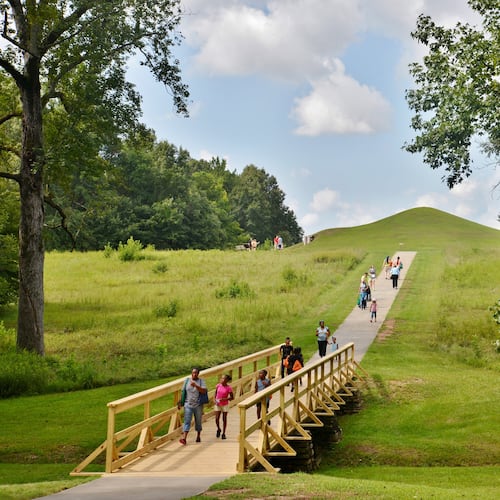At 11:10 last Friday night, Greg Bluestein, one of our reporters, heard that John Lewis had died.
It took another one of our reporters, Tia Mitchell, nine minutes to confirm the news.
And with that, our newsroom began the important work of honoring a civil rights icon, a congressman, a legend.
Earlier that day, our newsroom had covered two big breaking stories – the death of another civil rights giant, Rev. C.T. Vivian, and a major development in a double murder case.
As you may remember, a judge overturned the conviction of a man who had served 20 years in prison. The judge’s decision was the result of the AJC’s own investigative work, which raised troubling questions about the case and prompted a new DNA test that showed the wrong man had likely been convicted.
In a note to our publisher about Lewis, I mentioned that even though it was late Friday night, a slew of reporters and editors began messaging one another, offering to help with our Lewis coverage.
“Let me know if I can help with anything.”
“I’m here to help, as needed.”
“Logged in.”
And that’s what makes our journalists so special. Each is so dedicated to our craft – and our journalistic mission. It’s important work.
So, too, was commemorating Lewis’ life – a life of standing up, speaking out and making “good trouble.”
Back in December 2019, when Lewis announced that he had stage 4 pancreatic cancer, our newsroom began preparing for the worst – yet hoping for the best.
Here’s a little secret. Oftentimes, newsrooms began preparing obituaries and special coverage months or even years before someone dies. That ensures that we’re not only prepared, but that we do our best work in celebrating an extraordinary life.
And Lewis’ life was certainly extraordinary, to say the least.
Even he admits he was stunned when he was first elected to the U.S. House in 1986. Yet, he would spend the next three decades lending his moral compass to the biggest debates of the day, becoming known as "the conscience of the Congress"
This advance work allowed us to so quickly share on AJC.com the news that Lewis had died. (Interestingly enough, the work of our journalists and their deep sources allowed us to debunk rumors a week earlier that Lewis had died.)
These preparations also ensured that when readers woke up Saturday morning, they would find a special section on Lewis’ death included in our digital replica, the AJC ePaper.
Credit: Alyssa Pointer
Credit: Alyssa Pointer
For some time, two of our reporters, Tamar Hallerman and Ernie Suggs, had been working on a special obituary. It spanned three pages in Sunday morning’s newspaper, and as all great obituaries do, it captured a life well-lived – a life led with purpose.
Our staff worked throughout the night – sending breaking news emails, ensuring that the homepage of AJC.com captured the magnitude of this incredible loss and poring through the countless historical photos of Lewis that would accompany our coverage.
At 9 Saturday morning, the newsroom held its first official meeting of the day. You could hear the exhaustion and sadness in the voices of our reporters and editors, yet everyone began the important work that lie ahead.
Andre Jackson, our editorial page editor, wrote a touching tribute, reflecting on the loss of Lewis and Vivian – two peaceful warriors, men who had selflessly offered their labors, their minds and even their bodies for the betterment of all in a troubled world of past and present. And Mike Luckovich drew a poignant cartoon memorializing both men.
Jim Galloway wrote a special column urging lawmakers to remove the figure of Alexander Stephens, the first and only vice president of the Confederacy, from National Statuary Hall in the U.S. Capitol and replace him with Lewis.
Christian Boone visited the site of the 65-foot-high mural of Lewis that towers over Atlanta's Sweet Auburn district. That weekend, mourners gathered in the shadow of the civil rights icon's famous image, paying their respects to the man and his legacy.
Suggs and Mitchell shared with readers a poignant story from Lewis’ boyhood home in Troy, Ala. – the very place where Lewis dreamt of a life beyond overheated Alabama fields and Jim Crow laws.
And our copy editors and designers began putting the finishing touches on a 12-page special section that would arrive with Monday’s newspaper. We printed that section Saturday night on heavier and brighter newsprint, and our carriers in the field placed it on top of the newspaper so that it would be the first thing readers saw when the newspaper landed on their driveways.
We were touched when a representative of Lewis’ family contacted our newsroom and asked for extra copies of that special section.
Over the next several days, we continued looking back on the indelible mark that Lewis and Vivian left on us all.
Perhaps you read our story as Atlanta said goodbye to Vivian. A horse-drawn hearse pulled his casket by the crypt of Rev. Martin Luther King Jr. and Coretta Scott King, followed by a throng of mourners who sang and chanted his name.
Or perhaps you shared with us your own photograph or personal account of meeting Lewis. We published a full page of those touching stories in last Wednesday’s newspaper, and they illustrated how Lewis was able to connect with so many people.
One woman bumped into Lewis at Atlantic Station and remembered how he reached down to pick up her 2-year-old daughter. “I couldn’t believe I was in the presence of such a great man,” she told us. Another woman met the congressman while standing in the aisle of a Kroger. “I kept cool in person,” she said, “and cried when I got in my car.”
And that’s just one of many things that made John Lewis so special. If you had a camera and had the chance to meet him, we wrote, chances are, you also have a photograph with him.
Over the last several days, we’ve written a lot of words, published a lot of photographs and shared plenty of personal stories.
But even then, it is still impossible to paint a complete picture of the remarkable lives of Vivian and Lewis.
Nonetheless, we have tried our very best, and we hope that our coverage reminded you of all the great things they stood for.
Maybe, just maybe, amid all the sadness, we made you smile when reflecting on what Lewis and Vivian meant to Atlanta and to mankind – and how much they’ll be missed.
Mark Waligore is Senior Director and Managing Editor of the AJC.
About the Author
Keep Reading
The Latest
Featured




